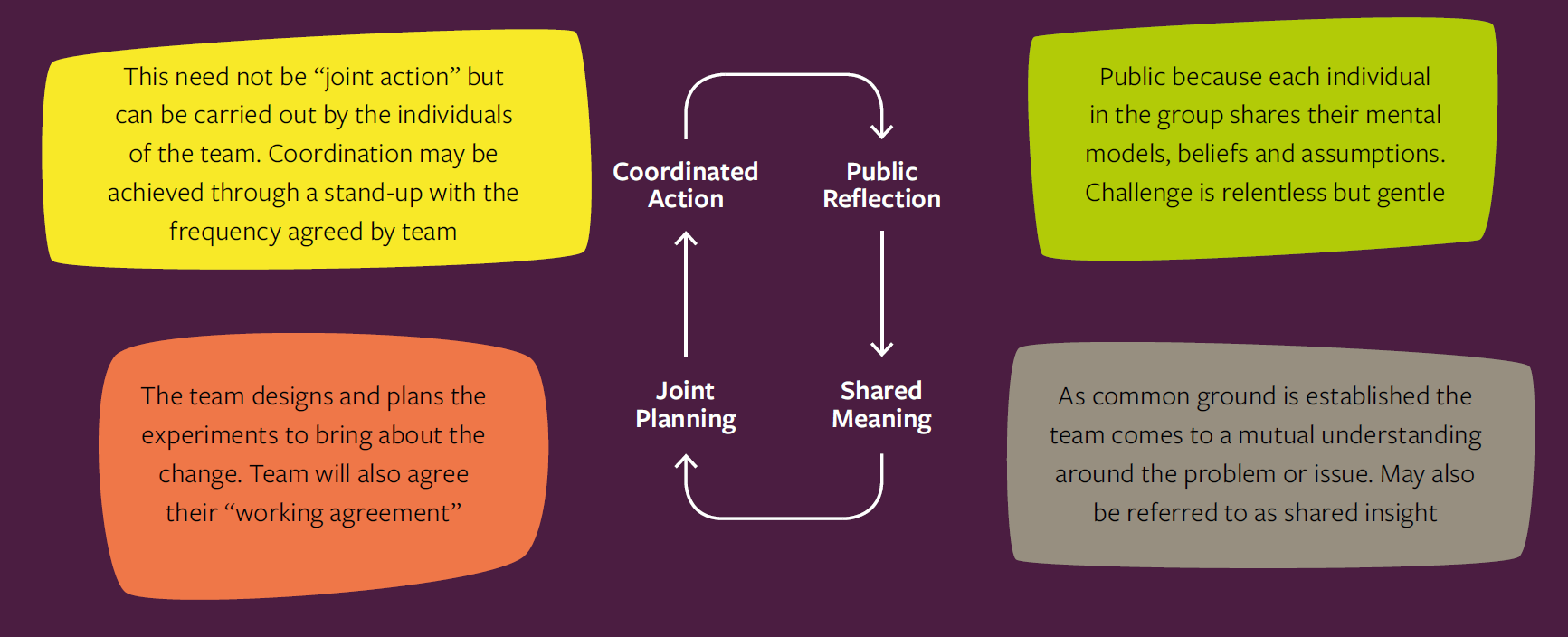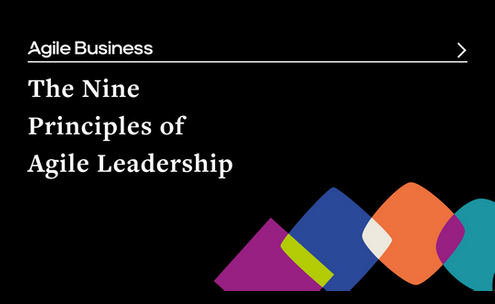Principle 9: Great ideas can come from anywhere in the organisation
Trust; flow of creativity; openness; feedback; recognition
People who are close to a problem usually have the best ideas about how to solve it. Agile Leaders allow themselves to be open to the influence and ideas of others, regardless of their status or position. To this end, the Agile Leader stops, listens and gives time to really hear the thoughts and ideas for improvement from their colleagues. Even if some ideas are not used, the Agile Leader encourages a continuous flow of creativity by helping people to understand which ideas were useful and which were not.
A call for ideas
Principle 8 shows why Agile Leaders should create collaborative communities and highlights trust as the essential ingredient. Principle 9 takes this one stage further and asks leaders to trust their people to come up with creative solutions to the problems they are facing.
Yet one of the most pervasive myths found in organisations is that the people at the top are the only ones that can come up with the best ideas. However, many of the C-suite executives are often too far removed from the reality of day-to-day life in the organisation to know what their people have to contend with.
This principle is a call for Agile Leaders to engage all their colleagues when seeking creative solutions to organisational challenges.
Unwillingness to adopt ideas because they originate from others
The reality of organisational life is such that many ideas from the brightest people go to waste because they are not heard or their ideas are ignored. Individuals can become frustrated when they believe their leaders ignore or dismiss their ideas. This situation is exacerbated when external consultants are brought in to help the organisation and recommend these same ideas that are then taken on board.
This attitude and behaviour does little to build confidence and morale in colleagues and often creates the opposite effect. People are unlikely to continue to give their best thinking if ideas are not taken seriously or are rejected because they came from a source other than a director or senior manager. Communication is a common theme in Agile Leadership, often taken to be the spoken word or written message. However, communication by example or by behaviour can be the most damaging because colleagues inevitably take meaning from the actions and attitudes of their leaders.
42% of employees have no idea where to submit an idea when it comes to them. And 80% have never been rewarded for a good idea they put forward1
The importance of feedback and reward
To encourage feedback and the generation of ideas, the Agile Leader needs to create an environment of trust and collaboration (Principle 8) as a foundation. The ability of all members of a team to input their ideas and to contribute to improved performance will be enhanced if the leader is seen to promote open and honest feedback (in both directions, per Principle 3); this can be further enhanced through recognition and reward schemes that praise publicly the contributions made by any member of the organisation.
As well as formal recognition programmes, the Agile Leader has the ultimate (and free!) tool at their disposal – the ability to say ‘thank you’, to say it in public…. and to do so with genuine gratitude.
The Agile Leader encourages feedback and ideas from all parts of the organisation and does so through both formal systems (such as employee recognition schemes) and through their behaviour (openness, approachability and willingness to praise)
Engage colleagues and build more value in the organisation
So how does the Agile Leader create an environment where ideas are generated and acknowledged from all parts of the organisation? The diagram here shows the Team Learning Cycle.2 This model builds on an approach called Action Learning3 which is easy to apply to any organisation and follows some simple rules.

A Team Learning Cycle - Taken from Senge et al 1994 and adapted by Mark Buchan
Agile Leaders can encourage several of these types of learning groups across the organisation in order to facilitate and promote learning. When well facilitated, these groups become a fun and inspiring way to help individuals develop and to start to shift the culture of an organisation.
The final word goes to Professor Edgar Schein of MIT Sloan School of Management:
...if you go through a big torturous process of giving them (employees) more recreation, nicer place, more privileges, all sorts of stuff and the boss still treats them as a non-entity, then you are not going to get anywhere
Sources
- P&MM Motivation website
- The fifth discipline fieldbook: Strategies and tools for building a learning organisation - Senge, P. et al (1994)
- Action Learning - Revans, R. (1980), Frederick Muller Ltd
Author

Agile Business Consortium
The Agile Business Consortium is the professional body for business agility. We’re all about community – whether you’re a multinational working through a large-scale transformation, a new start-up, or a contractor, we can support you to achieve more, to grow more, and to build your business agility. As a global not-for-profit organisation that’s been around for over 25 years, our knowledge and experience around agile competencies and behaviours can offer you the guidance you need to reach your agility goals. Together with our partners, we create and share agile research, case studies, resources and tools that help you compete in today’s uncertain world. A registered not-for-profit, we’re the world’s longest-standing agile-orientated organisation. We’re the brains behind AgilePM®, AgileBA®, AgilePgM®, AgilePfM™ and AgileDS™. Based in the UK, we have members in over 30 countries around the world.
Email: [email protected]
- Twitter:
- @Agile_Biz
- Website:
- www.agilebusiness.org
- LinkedIn:
- https://linkedin.com/company/agile-business-consortium


